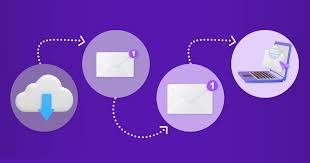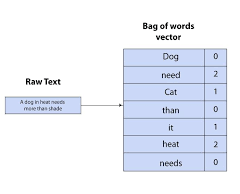Email Nurture Guide
The essential guide to creating and refreshing a basic email nurture strategy
Email Nurture
Lead nurturing is more vital than ever in B2B marketing. As a proven engagement strategy, it plays a key role in driving sales. Companies that excel at nurturing generate 50% more sales-ready leads at a 33% lower cost. However, with numerous components—automation, segmentation, mobile optimization, and more—email nurturing can quickly become complex.
Whether you’re sending one-touch emails or have evolved into a fully nurture-based methodology, a structured plan is essential to maximizing your ROI.
This insight will introduce the basics of email nurturing, help you identify the right nurture campaign for your goals, and walk you through the essential steps to building an effective strategy.
What is a nurture campaign?
A nurture campaign is a B2B marketing approach that engages targeted accounts and prospects through outbound activities. Its goal is to boost brand awareness within your total addressable market (TAM) and encourage prospects to consider your solutions.
Nurture content is designed to increase engagement by identifying the prospect’s interests based on their actions. The underlying premise is that if these accounts become more familiar with your brand, they are more likely to consider your products and services, leading to higher purchase intent.
Nurture vs. Lead Gen vs. Drip: What’s the Difference?
- Nurture vs. Lead Generation
- Lead generation focuses on finding new leads, while nurturing is about developing and engaging them, whether they’re new or existing. Lead gen attracts potential customers, while nurturing guides them through the buying journey by providing information needed to make purchasing decisions.
- Nurture vs. Drip Campaigns
- Nurture campaigns involve a tailored sequence of emails designed for specific buyer personas, typically spanning 2 to 6 weeks. Based on how recipients interact with your content, the next emails are triggered.
- Drip campaigns, on the other hand, are slow-feed, ongoing campaigns (e.g., newsletters) that provide general information at regular intervals. When prospects stop responding to a nurture campaign, they can be transitioned to a drip campaign to keep them engaged.
The Effectiveness of Nurture Marketing
Nurture marketing significantly increases the chances that your ideal buyers will consider your products or services when they’re ready to purchase. According to Demand Gen Report:
- 66% of marketers saw a measurable difference between nurtured and non-nurtured leads.
- 60% reported better engagement due to the targeting and relevance of nurture strategies.
- 57% of marketers found nurture campaigns generated warmer, more sales-ready leads.
Five Nurture Campaign Types to Consider
These campaigns address different stages in the customer lifecycle to help move prospects down the sales funnel:
- Welcome Email
A one-time email triggered when a prospect joins your list. This introductory email informs and educates your audience about your brand. Since it’s considered a transactional email, remember to include a consent management link for GDPR compliance. - Qualification Sequence
A series of 3-14 emails designed to deepen relationships with new prospects. This sequence educates recipients about their challenges and how your products can address them, turning qualified leads into opportunities. - Lead Generation for New Context
This sequence targets new leads or current clients with 3-14 emails offering deeper insights into your products based on their profiles and personas. - Lead Generation for New Clients
Complex buying decisions often involve multiple stakeholders. This series targets new contacts within existing accounts to compel them to learn more about your solutions. - Upsell and Cross-Sell
After converting a prospect into a customer, keep the conversation going. This ongoing campaign educates current clients on your other offerings, encouraging them to explore additional products and services.
Four Steps to Building a Nurture Campaign
- Define Your Goals and Objectives
Start by setting specific, measurable, attainable, relevant, and time-bound (SMART) goals for each campaign. Begin with the desired outcomes—whether it’s participation or sales—and work backward to create a nurture sequence. - Determine Your Target Audience
Understand your audience thoroughly. Ask questions like:- What’s the average sales cycle?
- What content drives sales?
Tailor your campaign accordingly, taking the time to learn the nuances of each persona.
- Identify Content for the Nurture Campaigns
Conduct a content audit to leverage what you already have. Align content with stages of the customer lifecycle: awareness, consideration, and decision. Repurpose content to fill gaps, turning webinars into infographics or e-books. - Define Transition Plans and Exit Criteria
A nurture campaign ends when audience criteria no longer apply or the content stream is exhausted. Leads can either transition to the next nurture stream or exit if the goal has been met. Regular messaging and follow-ups ensure you remain top of mind for future opportunities.
Conclusion
Building an effective nurture campaign requires patience and planning, but the results are worth it. Start small, learn from your data, and refine your strategy over time. Personalization and trigger-based campaigns can help you deliver the right message at the right time, ensuring prospects move smoothly through the sales funnel.
Persistence guided by data and insights, will increase your chances of nurturing your leads into loyal customers.
🔔🔔 Follow us on LinkedIn 🔔🔔













